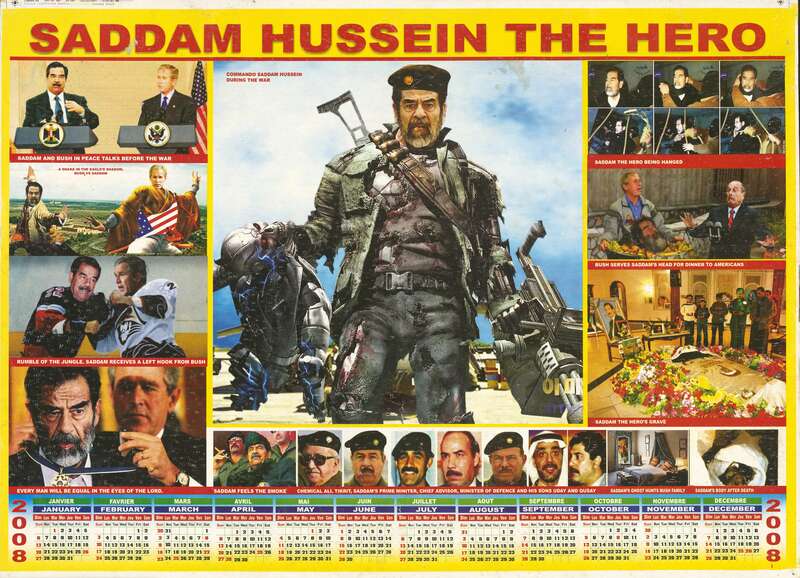
I find this book a treasure trove of awe-inspiring images and a confrontation with the limits of my own political and aesthetic imagination. While reading, I am constantly challenged to reconsider my assumptions about propaganda and the power of images.
Shortlisted for the Arles book award, this is a visually stimulating book on the lively and provocative political posters made on Nasser Road. Here, in ‘Uganda’s Silicon Valley’, everything (from fake university degrees to counterfeit money to radical political posters) can be made. The posters were collected by Kristof Titeca, professor at the Institute of Development Policy at the University of Antwerp, who also provides a necessary analysis of the spectacularly outrageous posters.
The posters take on Western hegemony as well as local and national corruption. They feature ‘global icons of dissent’ such as Osama Bin Laden, Saddam Hussein, Muammar Gaddafi, Donald Trump, and Kim Jong-un, who are Photoshopped to look like RoboCop, Rambo, and other staples of Hollywood action movies. In a paradoxical act, these highly Americanised figures represent the fight of the common people against the evils of the current world order. In other words, the posters use the languages and tropes of cultural hegemony to critique it.
The posters do more, too. While reframing and renegotiating questions of local justice in a culture that is rife with political misdeeds and violence, they also call attention to the powers of visual propaganda. They are the zero-degree of grassroots political communication and show how any celebratory or accusatory visual document works. After having encountered these posters, I can longer look at Western and European political and media imagery without filtering it through my newly acquired Nasser Road lens. The trashiness of our political (visual) culture becomes glaringly apparent thanks to Titeca’s collection.
Note to the reader. This article is part of Trigger’s 2023 ‘Summer Read’ series. We invited writers, researchers, photographers and curators to share what is currently occupying their mind through one publication they have been (re)reading during summer. What matters to them is now being recast as a challenge for today. Highly personal entries to a diversity of publications (photobooks, studies, monography, essay, historical research) lead us – readers of these readers – to reorient our gaze on (the history of) images and photography.
